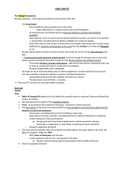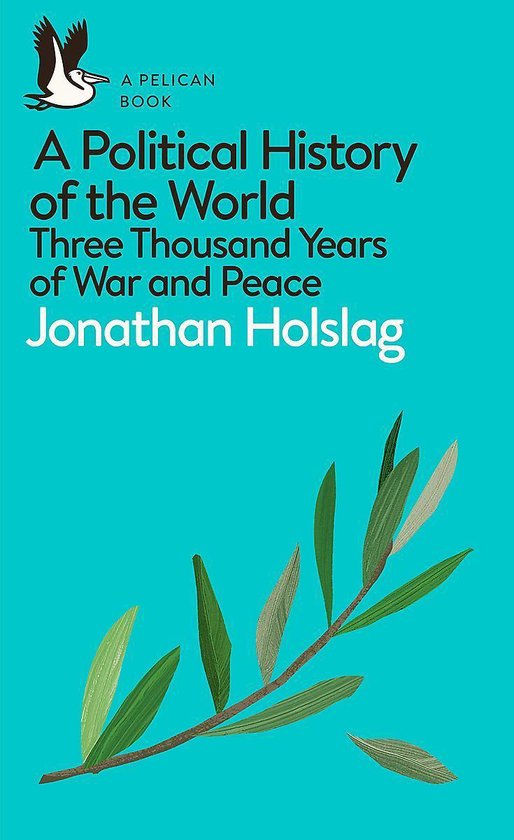1000-1250 CE
The Mongol Shockwave
Mongol expansion - most important political event between 1000-1250
- The Song Empire
- Was to build the most powerful navy in the world
- Major expeditions to Vietnam, Korea, base in the Philippines, ..
- Its naval prowess was backed up by an immense domestic economy and industrial
capability
- Clear imperial vision of using its power against barbarians, pirates, any threat to its interests.
- => seemed like it would spread its influence globally; but would not happen.
- Song China was far from united, so naval power was largely used along rivers to quell unrest.
- Held back by invasions of barbarians in the north: first the Jurchen in C12, then the Mongols
in C13.
- Mongol attacks halted Chinese economic growth, and would not recover till the Ming Dynasty 150y
later.
- => Turning point which decisively altered the BOP in the EH: though the Mongols also struck at the
Islamic powers and Eastern European kingdoms, they did not advance into Western Europe.
- This spared Western European development - agricultural innovations, expanding trade, rise
of cities as commercial centres, construction of kingdoms.
- Mongols stopped likely due to geography
- No longer at risk of imminent destruction by external aggressors, Europe’s polities focused on the
ever more relentless contest for military, economic, and financial primacy.
- Increasingly powerful and self-confident city states (eg. Venice)
- Though armies were still little -> Crusades
==> This was NOT yet the era of Europe’s global conquests.
East Asia
CHINA
Song
● Battle of Gaoping 954 (against the Liao) halted the nomadic forces in northern China and allowed the
south to be unified.
● 960: announced its reception of the mandate of heaven
● Tiazu - in accordance with Conffucian teachings - promised to restore harmony.
● The first century of the Song was characterised by a long struggle to overcome those states that still
refused to accept their supremacy.
○ Taizu began consolidating his power by building a large army.
○ Stark choice for enemy warlords: overwhelming force or lifetime retirement at a distance.
○ Firmer footing for civilian government
■ Reorganised into three distinct departments: central secretariat, advisory
chancellery, a department of state affairs (consisting of many ministries)
○ Domestic unification advanced
● The main security question was how to defend the border against the major states to the north: the
Liao, the kingdom of Xia, and Tibet.
○ 1005: Treaty of Shanyuan with the Liao.
○ A deal negotiated with the Xia , buying peace with ‘gifts’.
■ Despite a faction arguing against appeasement and for harder measures.
● Period of prosperity followed
, 1000-1250 CE
○ Song emperors strengthened control over NCP and rich agricultural region south of the
Yangtze.
○ Emperor Shenzong: New Policies - introduced a primitive welfare state.
■ Living conditions improved
■ Economic production doubled
■ Internal and external trade flourished.
○ Became the world’s largest economy, exercising a huge power of attraction on even hostile
states.
○ Military balance shifted as well: army tribled.
■ Manufacture of gunpowder
○ Breeding programme to reduce dependency on horse import from CA.
○ Alongside military power, the Song used economic coercion and cut off trade with neighbors
if they refused to submit.
● Era of tranquility did not last:
○ The army had become large and well-equipped, but never able to subdue foreign enemies.
■ Clashes with the Xia continued - treaty hadn’t demarcated a border.
■ South: Song-Champa alliance to subdue the Ly Dynasty (Vietnam), ubt the war
drained the army’s strength, so had to withdraw.
○ => Campaigns and annual ‘gifts’ to the Xia and Liao drained the treasury.
○ Famine
○ Succession of setbacks
■ The Jurchen - with Song support - overthrew their Liao overlords, but they then
turned on the Song: surprise attack on the capital (Huizong abdicated. In 1127, he and
his son were captured by the Jurchens.). Speed and scale of the Jurchen triumph due
to Song complacency and incompetence, and Jurchen’s superior military tactics.
● The Jurchen founded the Jin Dynasty. Consolidated rule over the northern plain.
● The remnants of the Song retreated to the Yangtze and continued to rule under the Southern Song
Dynasty.
==> End of the Song -> became the Southern Song.
● In 1141: the Jin and Southern Song fixed the border in an agreement. Large annual tribute from the
Song in return.
● Both empires flourished for a while.
○ Song navy expanded again, new ports, maritime exploration.
● BUT at this time, the Mongol threat emerged.
○ Mongols emerged from the Orkhon Valley (Mongolia).
○ In 1130, Khamag Mongol confederation first clashed with the Jin.
■ Treaty was signed: Jin had to pay tribute.
○ Peace was short lived: new skirmishes, Mongols were pushed back.
○ But due to very cold summers, the Mongols intensified their efforts to advance south
(‘migration’ due to climate change).
○ In 1206 tribes coalesced around Genghis Khan (“universal ruler”)
■ Propagated the idea of a holy war, ordered by sky god Tengri to unify the world
under Mongol rule and avenge past maltreatment.





